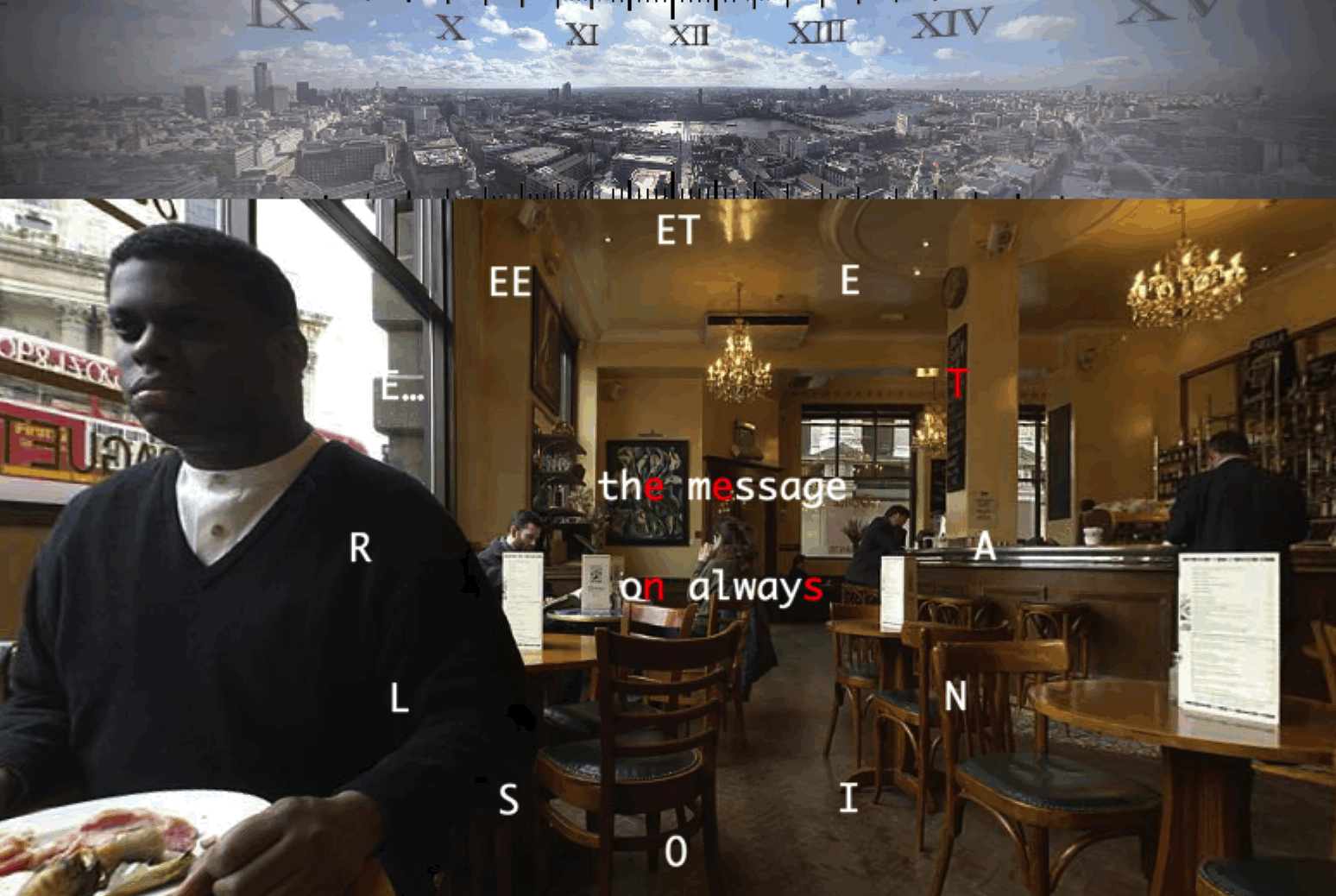wotclock
Mixed media, custom software, 2005
development of a QuickTime 'speaking clock'.
caption

This clock was originally developed for the TechnoPoetry Festival curated by Stephanie Strickland at the Georgia Institute of Technology in April 2002. It is based on material from What We Will, a broadband interactive drama produced by Giles Perring, Douglas Cape, myself, and others from 2001 on. The underlying concepts and algorithms are based on a series of 'speaking clocks' that I made in HyperCard from 1995 on.
At the moment, it should be stressed that the clock showcases Douglas Cape's superb panoramic photography for 'what we will.'
requirements & installation
wotclock was made when QuickTime was programmable, version 6.5.x. An authoring environment, LiveStage, allowed indexical media to be flexibly scripted and, until recently (as of summer 2020) all that was needed to view the resultant transactive (usually called interactive) movies was a modern version of QuickTime Player on any platform, including Windows, that would run it. From Mac OS X 10.15 Catalina, however, easy access to a suitable, generous version of QuickTime Player has been withdrawn.

The only way to enjoy this version of wotclock is to download and install QuickTime Player, version 7 from Apple on a Mac running OS X up to version 10.14 Mojave, then experience the movie from the player: File → Open URL... and type in: "http://programmatology.shadoof.net/works/wotclock/clock.mov".
reading the clock
After you launch the clock (please note, it does need a little while to load over the internet), take a look at the letters positioned around the clockface. Each one replaces a number you are familiar with from the dials of traditional time pieces:
e=1, t=2, a=3, n=4, i=5, o=6, and so on around the clock.
Using this letter/number code, the clock composes a continually changing set of phrases that, literally, tell the time.
An algorithm selects words from underlying pieces of composed writing. The algorithm searches for words that contain the particular letters (=numbers) needed to tell the correct time, according to the computer's system clock. This letter (=number) is shown in red. If no letter is red, the implied number is zero.
The first two words in the centre of the clock give the hour; the second two give the minute. A 'second hand' also moves around the clockface's 'dial' (and code map).
Occasionally, on the minute, the scene shifts, revealing an underlying imaginary. On the hour, both scene and underlying imaginary change according to the schema of 'what we will ...'
You can, by the way, click and drag both the upper 'St Pauls' panorama and the hour-scene panoramas. The upper panorama will, however, always revert to an approximate analogue representation of the time.
On a technopoetical note, the clock's algorithms generate the phrase-texts in a Markov chain derived from underlying composed dialogue fragments for each hour-scene. The chain-making is then, where necessary, overridden by the encoded, mesostic time-telling requirements.
